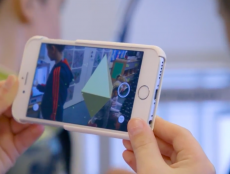
All aspects of our lives have been influenced by technology. During the last century, numerous industries have changed dramatically because of new tools and technological advancements. The way we work, travel, and communicate has changed thanks to smartphones, fast internet, and other technologies.
However, some areas changed less than others. A great example of an industry that is still quite similar to what it used to be a hundred years ago is education. Although now schools have computers and some digital learning materials, students still attend classes and listen to the teacher. There is still the same educational approach and the same curriculum for all students.
Fortunately, interactive software, artificial intelligence, cloud technologies, augmented reality, and other technologies can change education as we know it. The most promising area of development is adaptive learning, which can help tailor the educational experience to the needs and preferences of each particular student, making sure that everyone can learn effectively. Students can learn at their own pace without lagging behind or feeling bored because the learning pace is too fast or too slow for them.
The adaptive nature of technology is the key to personalized education. Personalization is already a huge trend in such areas as eCommerce and social media, and applying this approach to education can revolutionize learning. For instance, artificial intelligence can analyze the students’ response time and test answers to determine whether a particular student needs more time to learn a certain subject or is ready to explore other topics. There are also many other ways technology can be used in education so we’re going to consider them in more detail.
Efficient management
Modern schools need to improve the overall quality of education and to use efficient management techniques. However, efficient management still remains a challenge. Technology can help educators increase the speed of decision-making and to measure different educational processes more accurately. Big data and machine learning enable educators to improve any processes associated with data.
Better learning with analytics
Well-equipped educational institutions start to use analytical software to track their students’ success. Teachers can use analytics to determine each student’s learning style and to monitor students’ progress. Educators and students’ parents can help students share knowledge in virtual study groups. This process can also provide teachers with insights into their students’ interests and learning objectives.
Learning at home
Chalkboards are disappearing quickly and schools start to use smart classrooms. Teachers are no longer limited to textbooks. Instead, they can use educational videos and interactive apps. There are many computer-based learning modules and online learning modules that include videos, slideshows, and other multimedia materials that can make the educational process more engaging and effective.
Advanced methods of education allow educators to create online lectures so that students can learn anytime from virtually anywhere in the world. Many students start to work because they need to pay tuition or to provide for their families, and such a solution gives them the flexibility they need so badly. Besides, there are many places in the world where schools are far from reach, and distance learning enables everyone to get an education from home.
Improved engagement
Technology also enables educators to develop new interactive and collaborative methods of teaching. Online quizzes, webinars, and panel discussions can encourage students to actively participate in the learning process. There are also many gamification approaches that make the students’ experience even more engaging.
Interactive education becomes more effective because students can not only get theoretical knowledge but also use it in practice. Educators can experiment with various interactive approaches, and some of the best tools are augmented reality and virtual reality. Students can work in virtual labs and virtual classrooms. They can also use virtual reality to master skills that are associated with risks. Educators can simulate various real-life situations so that students can quickly learn possible challenges and figure out how to overcome them.
Addressing the shortage of teachers
Many areas of education have a common problem: there are not enough teachers so many students cannot get the necessary education. Such an issue exists in many developed countries, including the U.S. Obviously, the situation is even worse in developing countries. For example, many government educational institutions in India have a shortage of teachers that reaches 39%.
Thanks to online learning and other digital solutions, educators can create personalized learning programs that help solve this problem while also increasing the effectiveness of the educational experience. Online exchanges of teachers also enable students from all over the world to connect with teachers from a certain area.
Cooperation
One of the main problems of modern higher education is that it’s not accessible enough. Collaboration between different schools can increase the accessibility of education because universities can share the same learning ecosystem and help each other develop curricula. Thanks to online communication, universities can exchange knowledge and educational sources.
For example, such an approach has already been used by the Monterrey University of Technology, the Andean University of Columbia, and the Pontifical Catholic University of Chile. This project was called La Tríada, and it enabled over 150,000 people to access more than 100 online courses.
Self-paced learning
We’ve already mentioned the fact that most educators use the same approach for all students. However, the truth is that everyone learns differently, and everyone has their own pace of learning. Some students learn quickly, while others need more time to learn the same topic. The one-size-fits-all approach makes some students struggle to keep up with the rest of the class, while students who learn fast don’t have an opportunity to learn more, even though they can.
A great way to address this issue is to use online assignments so that students can continue to work on them at home if they need it. All in all, the internet offers a lot of helpful resources, educational materials and sites that can help students study more effectively. In this regard, even sites like Reddit can be helpful. For instance, one can take advantage of numerous subreddits and sites that offer homework help and essay writing services.
Self-paced learning can help all students get the best results from their efforts and it also enables educators to come up with effective personalized programs.
Final Thoughts
The rapid development of technology has already changed all areas of our lives so education shouldn’t lag behind. Thanks to virtual reality, artificial intelligence, machine learning, and cloud technologies, educators can address a number of important issues and create a better education experience for everyone. Thanks to technology, education becomes more accessible and more effective, so its impact on learning will continue to grow.
Featured Image: Volodymyr Hyrshchenko, Unsplash.









No Comments